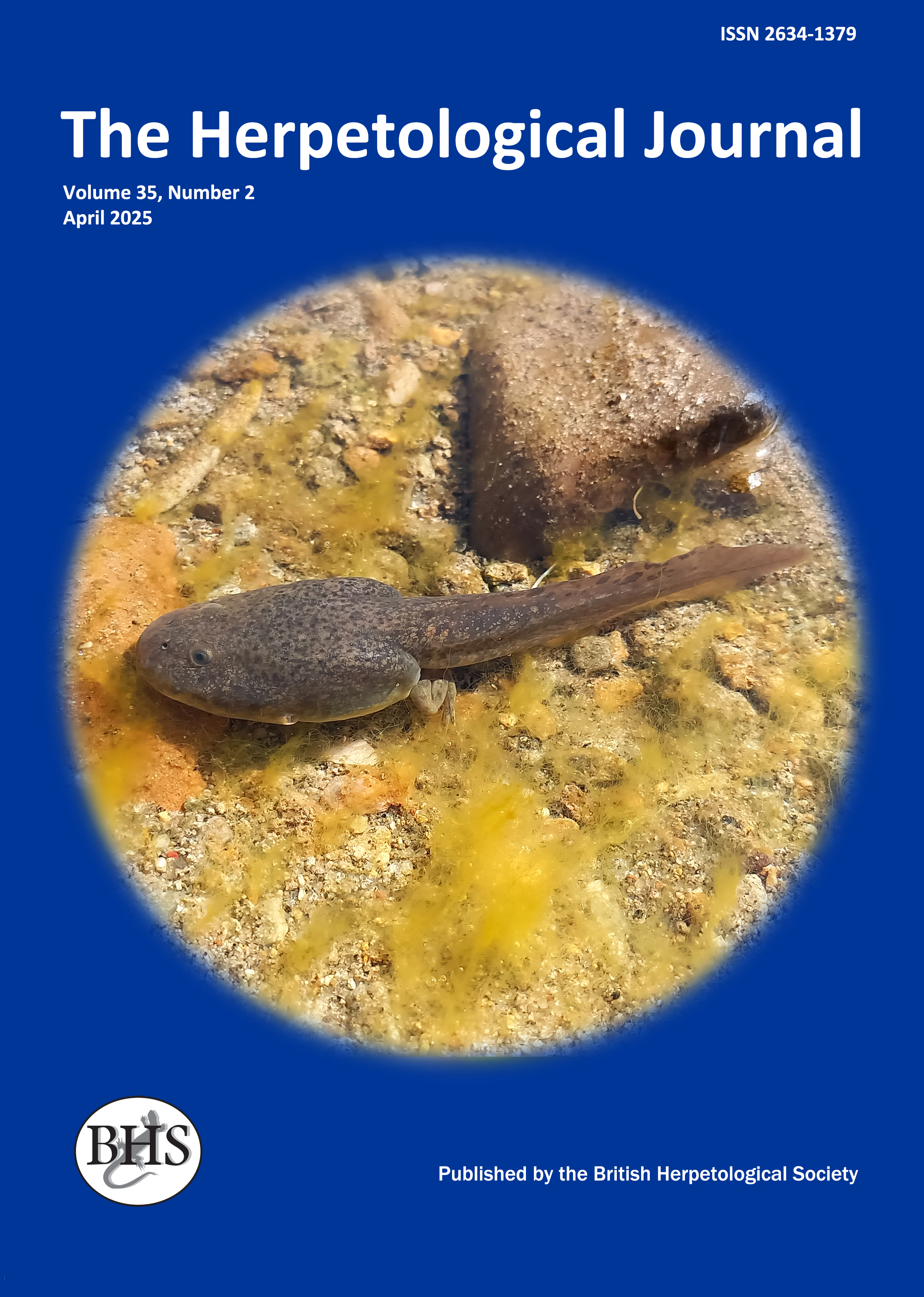
The Herpetological Journal
The Herpetological Journal is the Society's prestigious quarterly scientific journal. Articles are listed in Biological Abstracts, Current Awareness in Biological Sciences,Current Contents, Science Citation Index, and Zoological Record.
ISSN 0268-0130
2021 Impact Factor from Clarivate for the Herpetological Journal is 1.194, an increase of 0.332 from 2020.
pdf 07. Urinary corticosterone metabolite responses to capture and visual elastomer tagging in the Asian toad (Duttaphrynus melanostictus)
823 downloads
Open Access
https://doi.org/10.33256/hj29.3.179183
pp. 179-183
Authors: Edward J. Narayan & Narahari P. Gramapurohit
Abstract: Herpetological research involving amphibians is increasingly using mark and recapture methods, employing various techniques such as toe-clipping and visible implant alphanumeric tags. Visual Implant Elastomer (VIE) is a new method available for herpetological surveys, involving a coloured dye inserted into the epidermal skin surface of frogs. Previously, there has been only one study which demonstrated that the VIE method does not generate a significant physiological stress response (using a faecal glucocorticoid method) in a captive amphibian species. Physiological stress can also be quantified non-invasively using urinary corticosterone metabolite (UCM) enzyme-immunoassay in amphibians. In this study, we tested the physiological stress response of a common amphibian species, wild caught Asian toads (Duttaphrynus melanostictus), by comparing UCM responses to capture handling, sham control or VIE marking method. Adult males (n = 38) were captured and sampled for baseline UCM (t = 0 h) then marked either using the VIE or sham (saline control), or only handled during capture. Subsequently, urine samples were collected at t = 2, 12 and 24 h for toads within each group. UCM levels were quantified using an enzyme-immunoassay (EIA) to determine differences among treatment groups and over time following capture. Toads generated acute stress responses to all three groups, showing a change in UCMs between baseline samples, 12 h, and 24 h samples. The mean UCM levels were not significantly different between the VIE method and the control groups (capture handling or sham operated). These results indicate that VIE method of tagging is no more stressful than routine handling of amphibians, hence in this context, the method does not have any additional welfare implications. Future research should explore the limitations of VIE tagging for long-term mark recapture studies, however, our current findings support its application as a minimally-invasive method for marking amphibians.
Keywords: amphibians, mark-recapture, welfare, stress, Visual Implant Elastomer (VIE)

